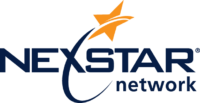By Jeff Atwell, Nexstar Network NexTech Academy Coach

Wait, what did he just say?
I was sitting in on a management meeting at a business owner’s invitation. The information he’d been sharing with his team had, up until that moment, seemed straightforward – you know, staffing for the day, inbound calls, calls converted to demand service appointments, the usual. Then the owner tossed out a metric I’ve never heard before: lost calls for the day.
Lost calls for the day? He had my attention.
I had so many questions. Were those today’s numbers? How could there be a metric for today when the day wasn’t over yet? What was considered an acceptable loss in this category? How could the lost calls be such a large percentage, based on the booked calls? How many calls did the techs run on an average day?
The owner explained that eight of the 40 demand calls (20%) on the board were being written off for the day, with no hope of getting a technician to the call. Naturally, an attempt would be made to reschedule those calls, but the odds of a recovered and rescheduled appointment were poor.

I couldn’t wrap my head around this. How could 20% of the calls on the board just be written off, as if that was normal? I needed more information.
The owner told me it wasn’t uncommon in his business to have callbacks, warranty calls, and jobs that went over on their allotted time; these jobs all became a scheduling priority the following day. This created a domino effect that had become the status quo. The practice was so accepted that lost calls were an everyday metric to track in the managers’ meeting!
This was a vicious cyle that had grown into a problem affecting nearly 20% of this owner’s daily business. And it was all completely avoidable.
Callbacks or warranty calls (technician warranties) are the most frequent and expensive kinds of calls for any home service company. They have a profound impact on revenue and profitability. The direct cost of returning to a customer’s home is nothing compared to the lost opportunities and subsequent income of the calls you lose because you’re scheduling callbacks. Furthermore, as if they weren’t expensive enough, those lost opportunities cost a small fortune in advertising dollars spent to get them in the first place.
If this is happening with your business, it’s time to take control.
Callbacks or warranty call are usually caused by one of the three “P’s”– people, processes, or products. So what’s the solution?
Training! Yes, training. You can reduce callbacks and increase your revenue by providing your team with on-the-job technical training. Here’s how you start:
-
Perform a historical review
In the past 6-12 months, what kinds of warranty calls or callbacks have you received? Thinking in terms of people, processes, and products, what do many of those calls have in common? Make a list of traits or topics some of your callbacks might share (e.g. warranty calls, time management issues, etc.) Once you have a list, prioritize those traits or topics by impact, meaning that if you were to put forth a training effort on a few of those topics, which ones would have the most significant impact on your business? Congratulations: you’ve just developed your first training plan.
-
Determine your approach to training the topic
What are the main things you want your employees to understand, fix, or learn? What will your team members be able to do after training that they couldn’t do before?
Once you determine the ‘what,’ you can focus on the ‘how.’ There’s no need to go it alone! Lean on your senior staff or senior technicians – the people who regularly deal with the issue you’re going to be training on. There is a particular brilliance in collaboration.
Don’t forget to use outside resources, too. Many manufacturers offer training on their products. In some cases, the local representative can come to you and help with your training efforts.
-
Develop your plan to teach the first topic
Schedule the training and don’t postpone or reschedule it. Training that never takes place doesn’t help your customers or your bottom line.
-
Keep your eye on the ball
It’s vital to monitor everyone’s progress after training to see the effects of your training initiatives. Using key performance indicators (KPIs) is generally the easiest way to see those effects. What KPIs do you track? Calls run, conversions, average ticket totals, closing rates, turn-overs, warranty calls? Whatever you track, successful training will move those KPIs in favorable directions. Paying attention to these numbers will also help you get ahead of unfavorable trends. The numbers matter. Keeping tabs on warranty calls and callbacks also provides a wealth of information and helps to highlight your team’s training needs.
Technical training may seem intimidating at first glance, but you can do it! Identifying training topics and hashing out the key takeaways will help develop technical training that will expand technician skills and the overall abilities of your team. Training will also help you move closer to eliminating those pesky warranty calls and callbacks that fill the calendar and empty your business’s coffers.
 Jeff Atwell started in the plumbing trade the first business day after his high school graduation. He has more than 30 years of experience with residential and commercial service, as well as with residential new construction, and discovered a passion for teaching as an instructor at his local apprenticeship school. Jeff was the first technical coach hired to work on Nexstar Network’s NexTech Academy program. Since then, he has been working to create the best program focused on residential plumbing service. He can be reached at jeffa@nexstarnetwork.com.
Jeff Atwell started in the plumbing trade the first business day after his high school graduation. He has more than 30 years of experience with residential and commercial service, as well as with residential new construction, and discovered a passion for teaching as an instructor at his local apprenticeship school. Jeff was the first technical coach hired to work on Nexstar Network’s NexTech Academy program. Since then, he has been working to create the best program focused on residential plumbing service. He can be reached at jeffa@nexstarnetwork.com.




Join the conversation: